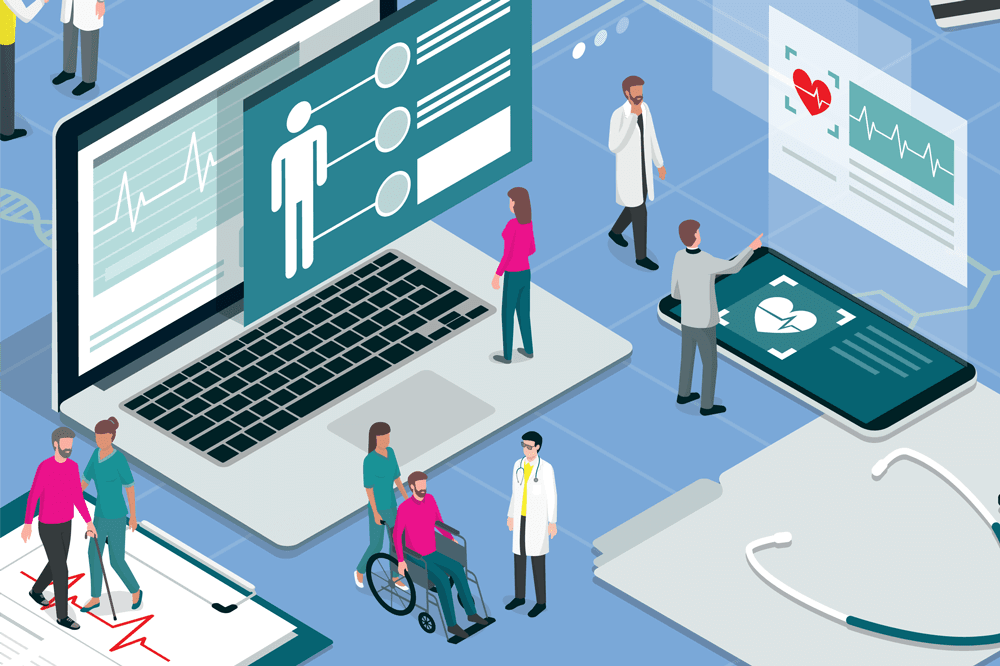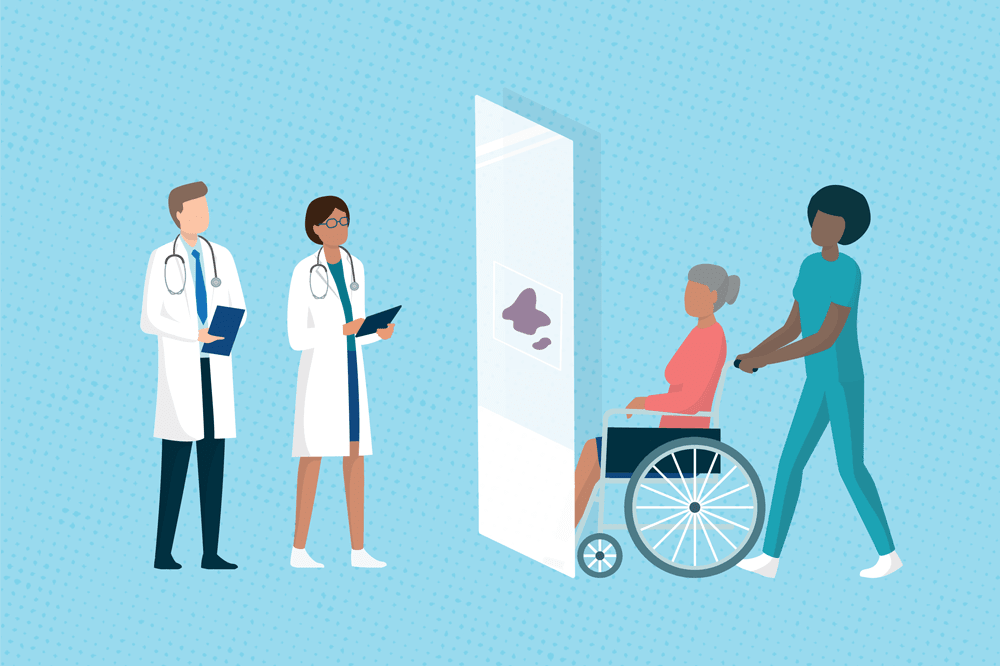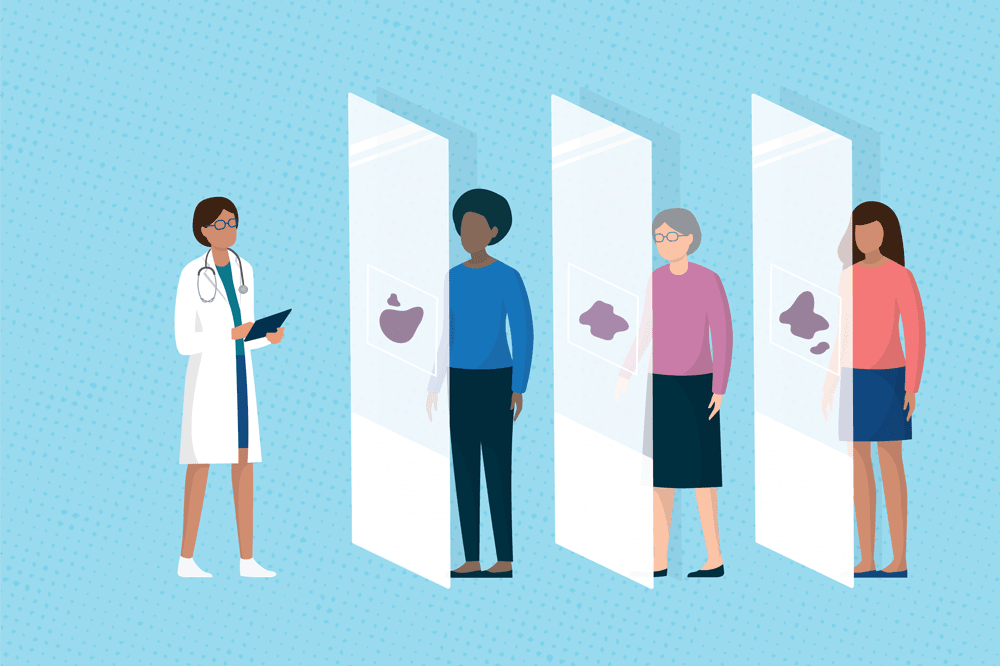- Many healthcare systems go through periods of increased pressure, particularly in the winter months
- Advances in diagnostic testing can reduce the number of patients receiving unnecessary care
- Technological assistance can support overburdened diagnostic professionals with some tasks
- To implement new technologies, open-mindedness and collaboration are vital
Barely a week goes by during winter when the UK’s National Health Service (NHS) isn’t in the headlines. Increasing wait times, more cancelled operations, and higher bed occupancy rates have led to the term “winter pressures” to define this seasonal crunch point, during which the NHS struggles amid spikes in clinic appointments and hospital admissions for illnesses such as influenza (1).
Short of resolving the long-term issues facing the NHS – funding, workforce, an aging population, and the impact of chronic conditions and comorbidities – there is little talk about how to alleviate these pressures (2). The focus is on the problems, rather than solutions.
So what can be done to help?
In an attempt to answer this question, a group of diagnostic specialists, clinicians, healthcare professionals, tech innovators, and policy leads from NHS England recently came together for a roundtable event to discuss how innovation and technology – widely hailed as the answer by Health Secretary Matt Hancock – can address these issues.
One of the key themes of the discussion was the impact of rapid diagnostics. With the growing threat of antimicrobial resistance, the ability to diagnose common bacterial infections takes on serious significance to global health, as well as a more quotidian, operational importance. Geoff Twist, Managing Director of Roche Diagnostics, emphasized the importance of leveraging the latest medical technology to help alleviate pressures on the NHS.
“Having reliable, actionable information is key for healthcare professionals to help them provide patients with the right treatment at the right time and discharge with confidence where appropriate,” he said. “Diagnostics plays a huge part in helping relieve pressure on the NHS every day, but access is not equitable.”
Diagnostic tools help clinicians and frontline staff to detect, confirm, or rule out diseases. These innovations can enable healthcare professionals to focus on the patients who need specialized care immediately. They can also save on admissions, meaning waiting times for patients should be less and availability of beds should be greater (3). However, although Twist believes that innovations “can help transform how healthcare professionals are able to manage winter pressures,” he added that the key challenge lies in “spreading the latest innovations, helping to make them available where and when they are needed.”
Clinical scientist Emma Meader, from Norfolk and Norwich University Hospitals NHS Foundation Trust (NNUH), spoke about a point-of-care test used to check whether patients admitted with flu-like symptoms actually had the flu. The test can detect 43 strains of influenza A and B and seven of respiratory syncytial virus (4). NNUH found that, over a four-month trial period, only 46 percent of the tests staff carried out came back positive, leading to more efficient use of side rooms and quicker diagnosis. This in turn helped save money and led to more timely treatment for patients.
Meader said, “We are delighted to be one of the first hospitals in the country to use this new test. It has had a big impact on the hospital by speeding up diagnosis and ensuring that patients who have flu are isolated and receive treatment faster. This helps to reduce the risk of other patients catching flu. During a challenging flu season, this test makes it easier to manage beds and side rooms, because patients who do not have flu often do not require isolation.”

It’s clear that technological interventions can save on time and money when both are at a premium. In the age of tech, apps that can save both are never far from the news – and they have real-world advantages.
Ben Moody, Head of Health and Social Care at Tech UK, said, “Technology can help patients in a variety of ways. There are digital apps with an increasing evidence base to monitor and treat conditions from diabetes to insomnia. Some diagnostic tests can now be done without the patient’s needing to leave the comfort of their own homes, and smarter technology in people’s homes can stop them needing to come into a surgery or hospital in the first place. Tech can help clinicians to record and access the information that they need when they need it, and it can help planners to predict demand and supply over a longer period.”
Ultimately, Moody continued, health is a very personal sector and nothing is going to replace the contact between real people in the system. Nevertheless, technology can make the lives of everyone involved in planning, giving, and receiving care a lot easier and help patients to live happier, healthier, longer lives.
Much fanfare is made of the potential for technologically enabled developments, such as AI-assisted analysis or rapid diagnostics, to transform the NHS. However, attendees at the roundtable felt the right conditions need to be in place to accommodate such advances. Some delegates felt that technologists and healthcare professionals need to be more open to collaboration and listening to one another to build greater understanding. Recommendations included the expansion of the UK’s Academic Health Science Networks and the start of a collaborative exercise to develop a single set of standards for healthcare data and system interoperability (5).
The group also discussed the difference between diagnostics and pharmaceuticals and the lack of priority sometimes afforded to testing over treatment. It was felt that diagnostics evaluated by The National Institute for Health and Care Excellence, which are shown to be cost-effective and confer clinical benefit, should be given equal status to pharmaceutical products in their evaluation, recommendation, and funding mandate.
At a time when the NHS has only just pledged to get rid of its fax machines, it is understandable that people may be skeptical of novel technologies – but it’s these technologies that promise a better future for healthcare systems. There is definitely more that can be done to make the NHS better integrated and more interoperable, so that key data can be shared to inform all parts of the system. The ability to predict and respond to spikes in demand for care should also be a priority, so as to avoid periods of great pressure such as the one perennially experienced over the winter months.
Listening to the professionals working at the coal face of the NHS alongside those aiming to make their lives easier, it is clear that a new, collaborative way of working is needed to build sustainable, innovative healthcare systems.
Elliot Jones, a researcher at cross-party think tank Demos, says, “There are so many promising innovations and technologies out there waiting to be harnessed for the health of the public.” The next step is leveraging these to address some of the short-term pressures and ensure that healthcare systems and industry work together to build systems that are fit for the future.
References
- The King’s Fund, “NHS winter pressures” (2018). Available at: https://bit.ly/2NINB25. Accessed March 6, 2019. My Health London, “Today’s NHS – our current challenges” (2019). Available at: https://bit.ly/2Hnt2Xw. Accessed March 6, 2019. DA Williams, “How in vitro diagnostics can realise cost savings and improve patient outcomes for the NHS”, Science in Parliament, 68, 14–15 (2011). Roche Molecular Systems, “cobas® Influenza A/B & RSV” (2016). Package insert. E Jones, “Winter is coming. HealthTech is here.” (2018). Available at: https://bit.ly/2GYkNmp. Accessed March 6, 2019.




